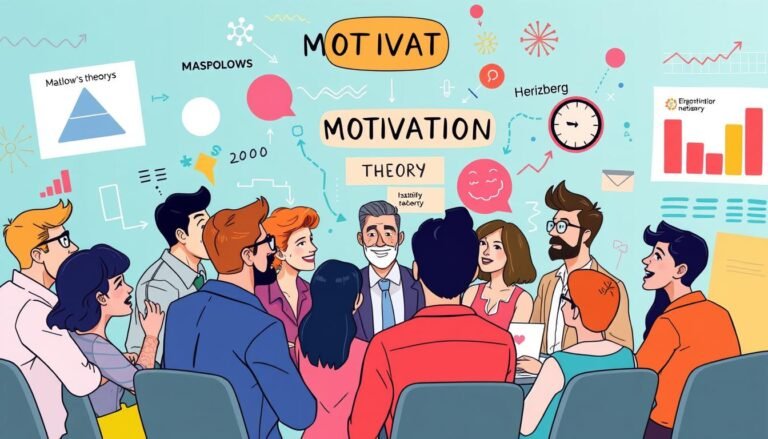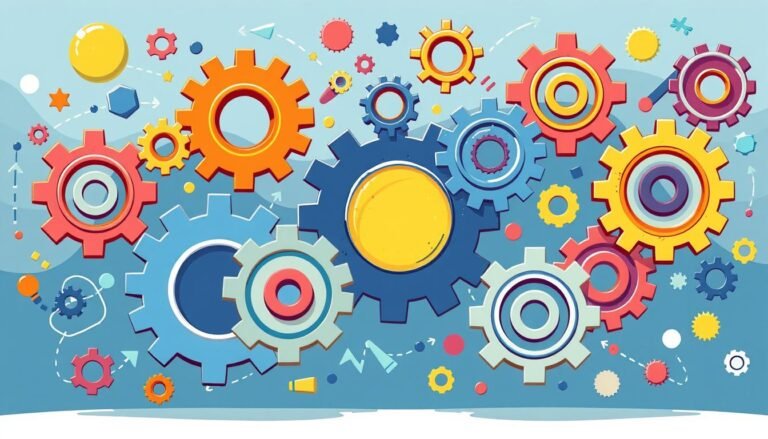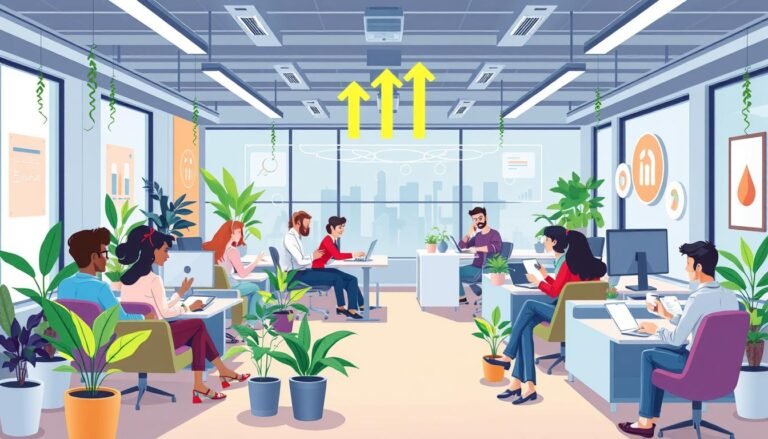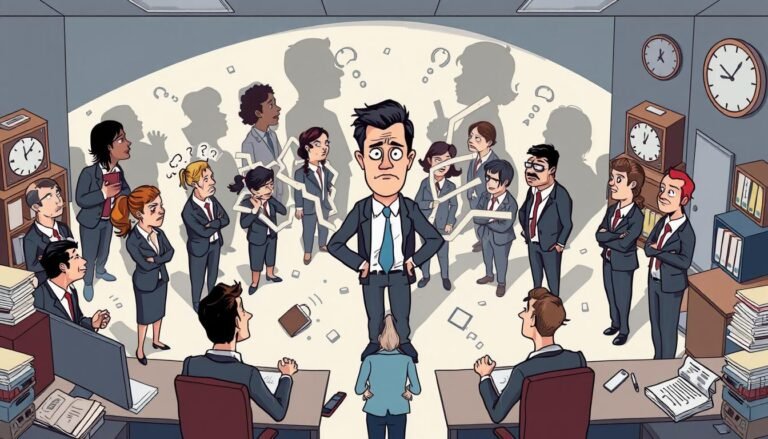The Psychology Behind Employee Recognition: Simple Tactics for Big Results
Ever thought how a simple “thank you” can change the workplace? Employee recognition’s impact on motivation and engagement is huge. It’s more than you might think.
In today’s job market, companies see recognition as key, not just a perk. It turns an average workplace into a place where everyone feels valued and wants to do their best.
Studies show a big problem in the workplace. Only one in three U.S. workers feel recognized for their good work in a week. This lack of appreciation is not just sad—it’s expensive. Workers who don’t feel valued are twice as likely to leave within a year.
But there’s hope. When recognition is done right, the outcomes are amazing. Happy employees are more likely to go the extra mile. They’re more productive, happier, and stay longer.
So, why is recognition so powerful? It meets basic human needs. It boosts self-esteem and makes people feel they belong. Recognition is a simple yet effective way to improve both individual and company performance.
Key Takeaways
- Only 33% of employees feel strongly recognized at work
- Lack of recognition doubles the likelihood of employee turnover
- Effective recognition boosts productivity and job satisfaction
- Recognition impacts motivation, engagement, and retention
- Both public and private recognition methods are valuable
- Recognition plays a crucial role in building company culture
Understanding the Importance of Employee Recognition
Employee recognition is key to a good workplace culture and motivates staff. It’s more than just saying thanks; it’s a powerful way to make a company succeed.
Defining employee recognition
Employee recognition means saying thanks for what staff do. It can be simple words of praise or big awards. It builds a culture where everyone feels appreciated.
The psychological impact of recognition
Recognition meets our basic needs. When staff feel valued, they’re happier and more satisfied with their jobs. This makes them feel part of something bigger, boosting motivation.
Benefits for individuals and organizations
Recognition has big benefits. For staff, it means they’re happier and grow personally. For companies, it means better work and keeping good staff.
| Benefit | Impact |
|---|---|
| Employee Retention | 4x more likely to stay at current job |
| Productivity | 17% increase in engaged teams |
| Sales | 20% increase |
| Profitability | Up to 21% boost |
Employee recognition is essential for any company wanting a positive work culture and success. By using good recognition strategies, companies can have a happier, more productive team.
The Science of Motivation: Theories Behind Recognition
Motivation theories explain why recognition works well in the workplace. They show what drives employees to do better and feel happier in their jobs.
The incentive theory says external rewards motivate people. This could be a bonus, a promotion, or just saying “thank you.” When employees get recognized, they’re more likely to do it again.
Competence theory looks at internal motivation. It says people are driven by activities where they feel they can do well. When managers praise an employee’s skills, it boosts their confidence and encourages them to take on more.
Mcclelland’s Three Needs Theory gives another view. It says most people are motivated by achievement, power, or being part of a group. Knowing which need each team member has helps managers tailor their recognition.
| Motivation Theory | Key Concept | Recognition Approach |
|---|---|---|
| Incentive Theory | External rewards | Bonuses, promotions, verbal praise |
| Competence Theory | Feeling capable | Skill acknowledgment, new responsibilities |
| McClelland’s Theory | Achievement, power, affiliation | Tailored recognition based on individual needs |
By using these motivation theories, managers can make recognition programs that improve employee engagement and job satisfaction. The important thing is to know what drives each team member and recognize their efforts in the right way.
Employee Recognition and Maslow’s Hierarchy of Needs
Understanding what employees need is key to their happiness at work. Maslow’s hierarchy helps us see how recognition meets these needs.
Safety Needs and Job Security
Recognition is important for safety needs. When workers are thanked for their hard work, they feel more secure. This job security boosts their happiness and motivation.
Belonging and Social Connections
Recognition helps workers feel like they belong. It makes team bonds stronger and teamwork better. Celebrating achievements makes everyone feel valued and connected.
Esteem and Self-Actualization
Recognition boosts self-esteem. Praise and thanks make workers feel more confident. This helps them grow and reach their best in the workplace.
| Maslow’s Need | Recognition Impact | Workplace Outcome |
|---|---|---|
| Safety | Increased job security | Lower stress levels |
| Belonging | Stronger social connections | Enhanced team cohesion |
| Esteem | Boosted self-confidence | Improved performance |
| Self-Actualization | Personal growth opportunities | Increased innovation |
By linking recognition to Maslow’s hierarchy, companies can support personal growth. This leads to more engaged workers and better results for everyone.
Neurological Effects of Recognition on the Brain
The study of recognition shows how it changes our brains. It affects how we perform and feel. This is true for both our work and personal lives.
When we get recognized, our brains release oxytocin. This hormone helps us feel connected and builds trust. It also makes us less stressed and more secure.
Our brain’s reward system also gets a boost. Dopamine, known as the “feel-good” hormone, flows through our brain. This makes us want to do the same thing again, leading to better performance.
“Recognition becomes a neural pathway, like a well-trodden forest trail, leading to sustained high performance.”
Studies highlight recognition’s big impact on work:
- 78% of employees work harder when recognized
- 94% believe recognition is crucial for talent retention
- 80% report increased productivity with recognition programs
Recognition does more than just make us feel good right away. It creates lasting changes in our brains. This helps us learn and remember things better. We can even do tasks more efficiently, even when we’re not thinking about them.
| Brain Chemical | Effect | Impact on Workplace |
|---|---|---|
| Oxytocin | Reduces stress, builds trust | Improved relationships, safer work environment |
| Dopamine | Reinforces positive behaviors | Increased motivation, higher performance |
Knowing how recognition affects our brains helps companies create better programs. By understanding these brain processes, businesses can build a culture of appreciation. This leads to better engagement, retention, and success.
Types of Employee Recognition Programs
Recognition programs are many and varied, all aimed at boosting morale and productivity. Let’s look at the different types that can really make a difference in your team.
Formal vs. Informal Recognition
Formal recognition has clear rules and rewards. Think employee of the month awards and bonuses for good work. Informal recognition, however, is more spontaneous, celebrating daily efforts. Spot bonuses, for example, are small rewards given right away.
Peer Recognition
Peer recognition lets employees praise each other’s work. It creates a supportive team and strengthens bonds. It’s especially good for younger workers who value teamwork and achievements.
Celebratory Recognition
Celebratory recognition honors special moments and achievements. Work anniversaries are a big deal, but personal touches make it even more meaningful. Employee Appreciation Day, on the first Friday of March, is a chance for companies to show thanks with parties or barbecues.
Other ways to recognize include written praise, verbal thanks, and celebrating project wins. Points-based systems offer personalized rewards through recognition platforms. Remember, timely recognition is more powerful than waiting, especially for big achievements.
“Recognition is not a scarce resource. You can’t use it up or run out of it.”
By mixing these recognition programs, companies can build a culture of appreciation. This resonates with employees of all ages.
Employee Recognition and Its Impact on Company Culture
Employee recognition is key in shaping company culture. It’s more than just saying thanks. It shapes the values and feel of the workplace. Let’s see how it affects different parts of work life.
Reinforcing Organizational Values
Recognition programs help make company values real for employees. They show what actions match up with these values. When employees see their efforts recognized, they get it and live it every day.
Fostering a Positive Workplace Atmosphere
A culture that values recognition makes the workplace better. People who feel appreciated work harder and are happier. Research shows that those who feel valued are more likely to stay with their company.
Enhancing Team Cohesion
Recognition brings teams closer together. It makes coworkers want to work together and support each other. For example, a company’s recognition program got almost 56,000 thanks, showing its effect on teamwork.
| Recognition Impact | Percentage Increase |
|---|---|
| Likelihood of above-average team connection | 508% |
| Odds of employee doing great work | 1800% |
| Chance of staying with the organization | 500% |
These numbers show how big of a deal recognition is for company culture. It strengthens values, boosts morale, and improves teamwork. Recognition makes a workplace where everyone can grow and succeed.
Designing an Effective Employee Recognition Program
To make a great recognition program, start by knowing what your team wants. Use surveys and focus groups to find out what motivates them. This helps set goals that meet both their needs and the company’s.
- 71% of highly engaged employees work in organizations that recognize staff at least monthly
- Peer recognition is the top influence in driving colleagues to go the extra mile
- Non-monetary recognition can be as effective as monetary awards for boosting engagement
Your program should have clear rules for awards and how often they happen. It should also mix money rewards with non-monetary ones. Make sure leaders support it and it fits with the company’s values. Think about using digital tools to make recognition easy and regular for everyone.
“Make the rewards and recognition program multifaceted to include both non-tangible and monetary rewards.”
Good recognition happens often and right when it matters. Encourage quick praise and recognition between coworkers. With these steps, you’ll improve engagement, keep employees longer, and strengthen your company’s culture.
The Role of Technology in Modern Recognition Programs
Technology has changed employee recognition programs for the better. Now, digital platforms and software make it easier to thank and reward staff.
Digital Platforms for Recognition
Today’s recognition software has cool features like social feeds and badges. It lets managers and coworkers give praise quickly. For instance, PYBAR Mining Services saw big improvements after starting an online platform.
Heineken’s story shows how tech can boost recognition. They saw a 50% jump in recognition in just five months. The secret was listening to employees and getting leaders on board.
Analytics and Measuring Program Success
Recognition software also gives insights and metrics. Companies can see how well their programs are doing. They can even make changes based on the data.
| Metric | Impact |
|---|---|
| Employee Retention | 20% increase |
| Employee Productivity | 12% improvement |
| Employee Engagement | 31% more likely to be high |
These numbers prove the value of using data in recognition programs. With technology, companies can create systems that engage their teams and lead to real success.
Overcoming Challenges in Implementing Recognition Programs
Starting recognition programs can be tough. Companies spend $46 billion on them but face many obstacles. One big problem is getting employees to use them. If programs are hard to use or don’t fit, workers won’t participate.
To solve this, make your program simple and meaningful. It should be something employees can easily use and see the value in.
Another challenge is making sure everyone knows what’s going on. With workers staying only 4.5 years on average, clear and consistent recognition is crucial. Avoid keeping rewards secret, as it can lead to distrust.
The Edelman Trust Barometer shows employees already struggle with trust. Open and fair recognition can help build trust in the company.
Finally, measuring success is important. Many companies struggle to see how well their programs are working. Use data to track progress and get feedback. This helps you make your program better.
By addressing these challenges, you can build a culture of appreciation. This boosts morale and productivity.
Source Links
- The Importance of Employee Recognition: Low Cost, High Impact
- 10 Steps To Build An Effective Employee Recognition Program
- Employee Recognition Is Key To Driving Business Growth
- Employee Recognition: What It Is, Why Awards Matter, and Appreciation Ideas You Can Use
- 7 Benefits of Employee Recognition (& Why it Matters) | Perkbox
- The Science behind Recognition – Possibleworks
- Employee Recognition: How to Motivate and Reward Your Team
- Understanding the Psychological Effects of Employee Recognition
- How Maslow’s Hierarchy of Needs can transform your employee engagement strategy | Pluxee
- Motivation in the Workplace through Maslow’s Hierarchy of Needs
- High-Five Your Brain: The Neurology of Recognition at Work
- The Science of Recognition: How Neurological Response Drive Performance
- The Neuroscience of Employee Engagement – Achievers
- Types of Employee Recognition and Rewards | Bonusly
- Discover the 7 Key Types of Recognition for Employees | Achievers
- Creating a Culture of Recognition
- How Recognition Shapes Work Culture and Employee Experience
- The Impact of Employee Recognition on Company Culture & Performance
- A beginner’s guide to designing employee recognition programs
- How Do I Build a Successful Employee Recognition Program? | Bonusly
- How to Create an Effective Employee Recognition Program
- Shifting to Digital Employee Recognition | Reward Gateway
- What role does technology play in modern recognition program management systems?
- What role does technology play in modern employee recognition strategies?
- Overcoming Common Reward & Recognition Challenges | Reward Gateway
- What are the common challenges and pitfalls of employee recognition programs and how do you overcome them?







